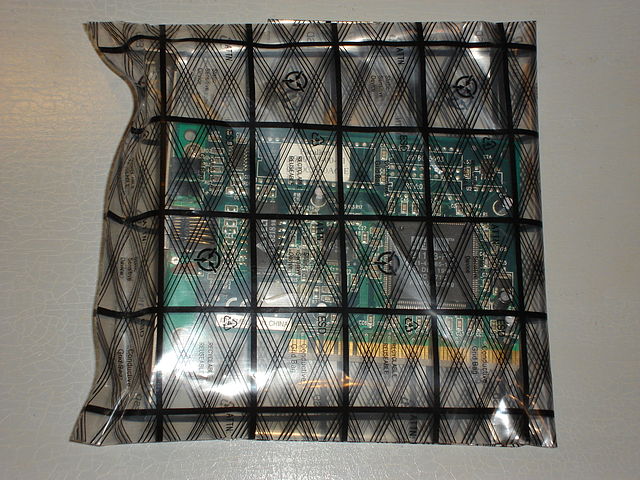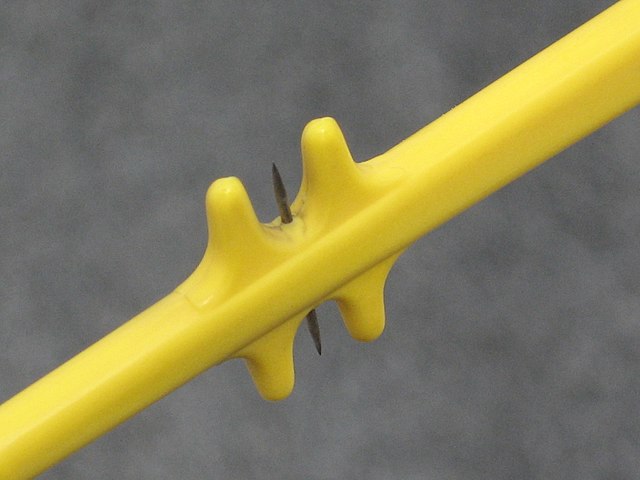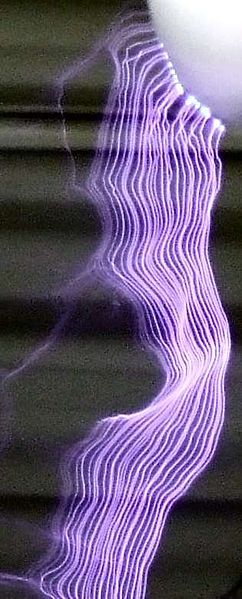Static electricity is an imbalance of electric charges within or on the surface of a material. The charge remains until it can move away by an electric current or electrical discharge. The word "static" is used to differentiate it from current electricity, where an electric charge flows through an electrical conductor.
Example of the effect of static electricity on a child's hair.
Styrofoam peanuts clinging to a cat's fur due to static electricity. This effect is also the cause of static cling in clothes.
A network card inside an antistatic bag.
An antistatic wrist strap with crocodile clip.
Electrostatic discharge (ESD) is a sudden and momentary flow of electric current between two differently-charged objects when brought close together or when the dielectric between them breaks down, often creating a visible spark associated with the static electricity between the objects.
A portion of a static discharger on an aircraft. Note the two sharp 3/8" metal micropoints and the protective yellow plastic.
ESD Jacket
A network card inside an antistatic bag, a bag made of a partially conductive plastic that acts as a Faraday cage, shielding the card from ESD.
Electric discharge showing the ribbon-like plasma filaments from multiple discharges from a Tesla coil.







